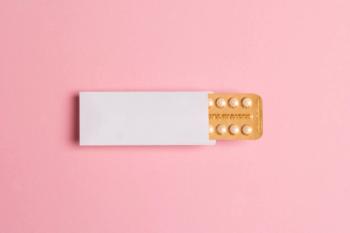Higher daily doses of buprenorphine may reduce the likelihood of emergency department (ED) visits and inpatient services related to behavioral health in adults with opioid use disorder (OUD) compared to lower doses, according to research published in JAMA Network Open.1
Buprenorphine is regarded as one of the most effective treatments for OUD, offering benefits in reducing overdoses and improving outcomes. However, the rising prevalence of fentanyl has led to concerns about the sufficiency of standard buprenorphine doses, such as the FDA-recommended dose of 16 mg daily. Fentanyl is a stronger μ-opioid receptor agonist than other opioids, suggesting that higher buprenorphine daily doses may instead be necessary to manage OUD in patients who use it.
- Individuals with OUD who received higher daily doses of buprenorphine were less likely to require ED or inpatient care for behavioral health issues compared to those on lower doses.
- Investigators suggested that the increasing prevalence of fentanyl, a more potent opioid, may necessitate higher buprenorphine doses to effectively manage OUD.
- The study's findings add to the growing evidence that higher buprenorphine doses can have positive health outcomes for individuals with OUD.
Observational studies have suggested that doses exceeding 24 mg daily may be associated with longer treatment episodes and lower relapse rates, but their impact on health care utilization is unclear. The current study investigated whether higher buprenorphine doses are associated with a reduction in the likelihood of ED or inpatient care utilization for mental health and substance use disorder visits.
The retrospective cross-sectional study examined health data from Optum’s deidentified Clinformatics Data Mart (CDM) database, which includes commercial health insurance claims for individuals aged 18 or older diagnosed with OUD from 2016 to 2021. The CDM is a comprehensive database of claims data from a major insurer with nationwide coverage.
A total of 35,451 individuals with an OUD diagnosis who began buprenorphine treatment were identified. Participants were categorized into daily dosage tiers, which included more than 24 mg; more than 16 mg to 24 mg; more than 8 mg to 16 mg; and 1 to 8 mg.
Participants initiated buprenorphine after at least 90 days of enrollment and were dispensed at least a 14-day supply. Data were analyzed from September 2023 through February 2024. Investigators calculated the number of days from initiation of the maximum buprenorphine dose to an ED or inpatient visit for a behavioral health diagnosis.
READ MORE: The Unyielding Grip of Fentanyl on America's Streets: A Pharmacist's Perspective
Overall, 12.5% of participants experienced an ED or inpatient visit. Survival analysis revealed that patients receiving doses of more than 24 mg and between 16 mg and 24 mg had longer times to ED or inpatient use compared to those receiving doses from 8 mg to 16 mg (95% CI: 1.02 to 1.20) and more than 24 mg (95% CI: 1.04 to 1.81).
Specifically, individuals with OUD who received doses higher than 16 mg were, on average, 69.5 (95 CI: 49.2 to 89.8) days slower to receive ED or inpatient care compared to those on doses more than 8 mg to 16 mg. Those receiving doses above 24 mg experienced a delay of 57.6 (95 CI: 50.8 to 64.3) days.
These findings suggest that higher buprenorphine doses may be more effective in managing OUD, particularly for individuals who use fentanyl as it continues to drive the opioid crisis; of the nearly 108,000 overdose deaths reported in the US in 2022, almost 70% were attributed to the synthetic opioid.2
Investigators noted that clinicians should be aware of the potential impact of higher doses on health care utilization while policymakers work to ensure equitable access to this treatment option for individuals who could benefit.
“As the overdose crisis evolves, particularly with the rise of fentanyl, it is crucial to investigate how to best adapt and deliver the lifesaving and evidence-based treatments for opioid use disorder that we have available,” said Nora D. Volkow, MD, director of NIH’s National Institute on Drug Abuse, in a news release.3 “The findings add to the growing evidence that higher doses of buprenorphine may have meaningful health impacts for people with opioid use disorder.”
READ MORE: Substance Use Disorder Resource Center
References
3. Higher doses of buprenorphine may improve treatment outcomes for people with opioid use disorder. News release. NIH. September 25, 2024. Accessed September 25, 2024.






















































































































































